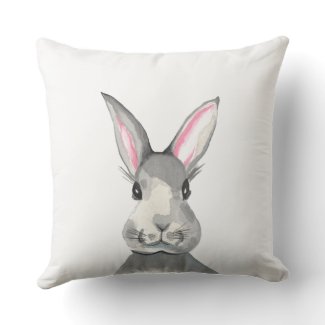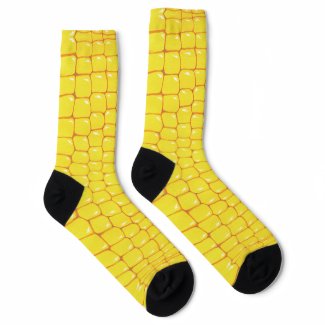Problem 1
A subset of $10$ elements of the set $\{1,2,3,…,90\}$ is called Boricua if by placing its elements in increasing order we have the following property: the difference between the second and the first is $1$, the
third and second is $2$, the fourth and third is $3$, the fifth with the fourth is $4$, etc. How many Boricua subsets are there?
Solution
Let $B$ be a Boricua set and let $x$ be the smallest element of $B$. Then the elements of $B$ are fixed with the largest element being $x+1+2+…+8+9 = x+45$. Therefore, $x+45 \leq 90$, or equivalently $x \leq 45$. From here the $x$ can be any integer number from the interval $[1,45]$ and the number of Boricua sets is $\boxed{ 45 }$
Problem 2
How many $3$-digit positive numbers are there which can be represented as a sum of exactly $9$ different powers of $2$?
Solution
Let $x$ be any such $3$-digit number and $M$ be the largest power of $2$ in its representation. Notice that for $M \geq 10$ we have
$$ x > 2^M \geq 2^{10} > 1000 $$
which contradicts the fact that $x$ is a $3$-digit number. From here $M \leq 9$.
Let us consider the list of $10$ numbers
$$ 2^0, 2^1, 2^2, … , 2^7, 2^8, 2^9 $$
The representation can be obtained by eliminating one of the powers from the list. It is not hard to see that we obtain $3$-digits only by the elimination of $2^9$, $2^8$, $2^7$, $2^6$, and $2^5$. Therefore, the number of such $3$-digit numbers is $\boxed{ 5 }$
Problem 3
Circles $\omega_2$, $\omega_3$, $\omega_4$ are tangent to the circle $\omega_1$ externally. Circles $\omega_2$ are $\omega_3$ are tangent with each other but are not tangent with the circle $\omega_4$. Using three different colors, in how many different ways can the following circles be colored so that NO two of the same color touch each other?
Solution
Let $\omega_1$ be colored with the color $A$, which can be chosen in $3$ ways. Then $\omega_4$ can be colored with any of the $2$ remaining colors: $B$ or $C$, which can be chosen in $2$ ways. If $\omega_2$ is colored in $B$, then $\omega_3$ should be colored in $C$, and vice versa, which can be chosen in $2$ ways. Therefore, the total number of colorings is $3 \cdot 2 \cdot 2 = \boxed{ 12 }$
Problem 4
Consider the integers $x$ and $y$:
$$ x = 10^{2022} +10^{2021} +10^{2020} + … +10^{2} +10+1 $$
$$ y = 10^{2023} +10^{2022} +10^{2021} + … +10^{2} +10+1 $$
What is the sum of the digits of $x + y$?
Solution
Notice that $x$ and $y$ are of the form $11…1$, where digit $1$ is used $2023$ and $2024$ times respectively. The number $x+y$ is of the form $122…2$, where there are $2023$ where digit $2$ is used $2023$ times. Therefore, the sum of digits of $x+y$ is equal to $1+2 \cdot 2023 = \boxed{4047}$
Problem 5
Let $ABCD$ be a quadrilateral, such that $BC=CD$, $\angle ABC = 90^{\circ}$, $\angle ACD = 90^{\circ}$, $\angle AOD = 100^{\circ}$, where $O$ is the point of intersection of its diagonals. Calculate the measure of the angle $\angle BAC$.
Solution
Let $\angle BAC=2x$. Then $\angle BCA=90^{\circ} – 2x$ and $\angle CDB = \angle CBD = x$. From the triangle $BOC$:
$$ 100^{\circ} + x + 90^{\circ} – 2x= 180^{\circ} $$
From here $x=10^{\circ}$ and $\angle BAC = \boxed{ 20^{\circ} }$
Problem 6
Let $S$ be the set of points $(i,j)$, where $i,j \in \{1,2,3,4\}$. By connecting four points from $S$, how many squares of different sizes can be formed?
Solution
It is not hard to see how to obtain the squares of sides $1$, $2$, and $3$.
It is also possible to obtain the squares of the side $\sqrt{2}$, for example, by connecting the vertices $(2,1)$, $(3,2)$, $(2,3)$, and $(2,1)$, and the squares of the side $\sqrt{5}$, for example, by connecting the vertices $(2,1)$, $(4,2)$, $(3,4)$, $(1,3)$. Therefore, the number of squares of different sizes is $\boxed{ 5 }$
Problem 7
A necklace is made up of $2022$ stones, $3$ of which are black and the rest are white. If numbered as shown in the figure, the black stones are at positions $1$, $674$, and $1348$. A move consists of exchanging a black stone with any white stone next to it. What is the minimum number of moves needed for the three black stones to be together?
Solution
Since initially the numbers of consecutive white stones are $672$, $673$, and $674$, then we should move the stones on the positions $1$ and $1348$ towards the stone on the position $674$. The total number of the moves, therefore, is equal to $672+673 = \boxed{ 1345 }$
Problem 8
Find all two-digit numbers $\overline{ab}$ such that
$$ \frac{\overline{ab}}{4} = \frac{\overline{ba}}{7} $$
Solution
Using the decimal representation of the numbers we have
$$ \frac{10a+b}{4} = \frac{10b+a}{7} $$
which, after cross-multiplication, implies that $2a=b$. Since $0<b <10$, then $a$ can only take values $1$, $2$, $3$ and $4$, which provides the numbers $\boxed {12, 24, 36, 48 }$
Problem 9
$M$ is the midpoint of the side $OB$ of the right triangle $AOB$, such that $OA=OB=12$ and $\angle AOB = 90^{\circ}$. Let $C$ a point, such that $CM \perp OB$, $CM=OM$ and $C$ and $A$ lie in different semiplanes with respect to $OB$. Let $q_1$ and $q_2$ be the quarter circles with centers $O$ and $M$ and the arcs $AB$ and $BC$ respectively. Find the area of the region formed by the segment $AC$ and the arcs $AB$ and $BC$.
Solution
Notice that $q_1$ is of radius $12$ and its area is $36\pi$, and $q_2$ is of radius $6$ and its area is $9\pi$.
Let $X$ be the intersection of $AC$ and $OB$ and let $a=XM$. From the similarity of the triangles $CMX$ and $AOX$ we have
$$ \frac{CM}{OA} = \frac{a}{6-a} $$
From here $a=2$, the area of the triangle $CMX$ is $6$ and the area of the triangle $AOX$ is $24$. Therefore, the area of the needed region is equal to $36\pi + 9\pi + 6 – 24 = \boxed{45\pi-18} $
Problem 10
In the right triangle $ABC$ ($\angle C=90^{\circ}$), the segment $AD$ is perpendicular to the segment $BC$, $AC = 6$ and $BD = 5$. What is the area of triangle $ABC$?
Solution
Let $AD=x$. From the similarity of the triangles $ADB$ and $ACD$:
$$ \frac{x}{5} = \frac{CD}{x} $$
and $CD=\frac{x^2}{5}$.
From the Pythagorean Theorem to the triangle $ACD$:
$$ x^2 + \frac{x^4}{25} = 6^2 $$
which implies that $x = 2 \sqrt{5}$.
From here $CD=4$, $BC=9$, and the area of the triangle $ABC$ is equal to
$$ \frac{BC \cdot AD}{2} = \frac{9 \cdot 2 \sqrt{5}}{2} = \boxed{ 9 \sqrt{5} } $$



